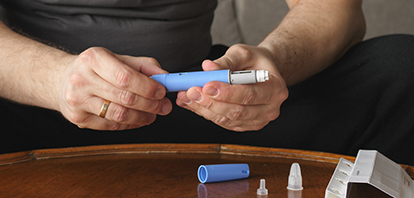Unlocking Precision in Outreach by Understanding the “Why” Behind the “Who”
The surge in GLP-1 demand—driven by drugs like Ozempic, Wegovy, and Mounjaro—is not just a medical trend, it’s a consumer movement. Whether you’re a telehealth provider, pharmacy, or payer, getting your GLP-1 strategy right means understanding not just who qualifies clinically, but who is motivated, capable, and ready to act. That’s where HealthWise Data (HWD) and consumer health and wellness (SDOH) data comes into play.
What is SDOH Data?
SDOH (Social Determinants of Health) data encompasses the non-clinical factors that influence health outcomes—like income, education, access to healthy food, transportation, health literacy, and more. It’s how people live, not just what shows up on a clinical record.
In the GLP-1 landscape, HealthWise Data’s consumer health behavior & lifestyle insights don’t just describe potential patients—it predicts behavior.
Why SDOH and behavior & lifestyle data is essential for GLP-1 Targeting
1. It Finds the Right Kind of “Eligible”
Not all clinically eligible patients are the same. Two people with identical BMI and A1C might live in vastly different environments—with differing ability to pay, access care, or commit to a long-term treatment plan.
HWD helps segment GLP-1 audiences by:
- Ability to afford treatment
- Health-seeking behaviors and past adherence
- Food insecurity and weight loss interest
2. It Pinpoints Motivated Self-Payers
Many GLP-1 patients are paying out of pocket, especially for weight-loss medications not covered by insurance. Traditional data sets miss this intent. HWD signals—( What goes into WELLth?)—identify not just who can pay, but who will.
3. It Enhances Personalization Across Channels
HWD-rich targeting enables more relevant creative, offers, and education—whether you’re running Meta ads, direct mail, or employer outreach. For example:
- Urban Gen Zs with high digital engagement may prefer app-based onboarding.
- Suburban moms managing household health spending may need education on long-term benefits.
- Mid-life professionals with high stress indicators might respond to metabolic improvement angles.
4. It Drives Better ROI
When you’re spending money on multiple channels, targeting efficiency is everything. HWD lets marketers:
- Decrease wasted ad spend on unlikely-to-convert audiences
- Target individuals likely to stay adherent
- Build better lookalike models from high-converting cohorts
Use Case: From Data to Decision
Scenario: A telehealth company is launching a GLP-1 weight management program.
- Standard targeting might focus on adults with obesity or diabetes diagnosis.
- SDOH-informed targeting goes deeper, identifying:
- High-income individuals in urban metros with prior Rx activity
- Health-engaged consumers using fitness subscriptions or buying supplements
- Areas with low access to endocrinologists—ripe for virtual care
The result? Better engagement, higher conversion, and more appropriate utilization.
Final Word
GLP-1s are not just about weight or blood sugar—they’re about lifestyle change, access, and motivation. HWD gives you the context that traditional clinical data lacks.





